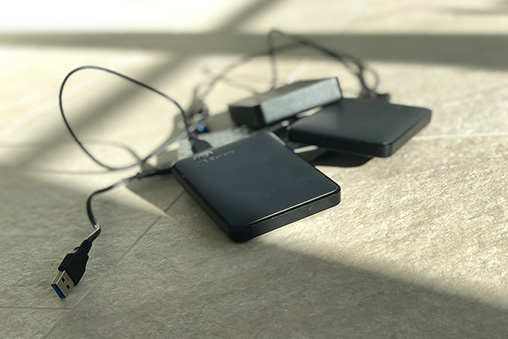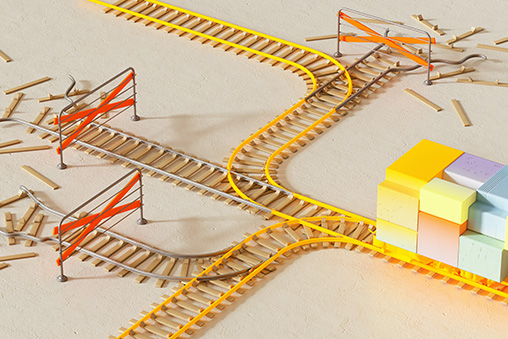Newsletter archive
State of Duplicate Annihilator – part 47
- Improvements to Duplicate Annihilator.
- AI in Photos Finder.
State of Duplicate Annihilator – part 46
- Duplicate Annihilator for Photos v9
- AI Classroom.
State of Duplicate Annihilator – part 45
- GPTEverything.
- AI coming to Duplicate Annihilator and Photos Finder.
State of Duplicate Annihilator – part 44
- Introducing Photos Clicker.
- Improvements to Photos Finder.
- Photos and People
State of Duplicate Annihilator – part 43
- Introducing Photos Finder.
- macOS 13 Ventura feature "Copy Subject" explained.
State of Duplicate Annihilator – part 42
- Photos 8 – how to set up a shared library
State of Duplicate Annihilator – part 41
- New features in Photos 8
State of Duplicate Annihilator – part 40
- Duplicate Annihilator for Photos v8 released
- How to search, filter, suggest and “facet” your search in Photos.
State of Duplicate Annihilator – part 39
- How to work with People/faces?
State of Duplicate Annihilator – part 38
- Metadata, what is it and how do I use and edit it?
State of Duplicate Annihilator – part 37
- Introducing Duplicate Annihilator 7.5.0 including fix for iCloud and missing files.
State of Duplicate Annihilator – part 36
- Introducing Duplicate Annihilator v7 including copy metadata from duplicates to originals.
- Smart albums for missing people no longer working
- Photos 7 and Live Text
State of Duplicate Annihilator – part 35
- Preserve folder and album structure as keywords
State of Duplicate Annihilator – part 34
State of Duplicate Annihilator – part 33
State of Duplicate Annihilator – part 32
State of Duplicate Annihilator – part 31
State of Duplicate Annihilator – part 30
State of Duplicate Annihilator – part 29
State of Duplicate Annihilator – part 28
State of Duplicate Annihilator – part 27
State of Duplicate Annihilator – part 26
State of Duplicate Annihilator – part 25
State of Duplicate Annihilator – part 24
State of Duplicate Annihilator – part 23
- Working with Duplicate Annihilator for Photos – part 3
State of Duplicate Annihilator – part 22
- Working with Duplicate Annihilator for Photos – part 2
State of Duplicate Annihilator – part 21
- macOS 10.5 Catalina, Photos 5 and Duplicate Annihilator v4
- Working with Duplicate Annihilator for Photos – part 1
State of Duplicate Annihilator – part 20
State of Duplicate Annihilator – part 19
State of Duplicate Annihilator – part 18
State of Duplicate Annihilator – part 17
State of Duplicate Annihilator – part 16
- Duplicate Annihilator – HEIC format support
- What is HEIC?
State of Duplicate Annihilator – part 15
State of Duplicate Annihilator – part 14
State of Duplicate Annihilator – part 13
State of Duplicate Annihilator – part 12
State of Duplicate Annihilator – part 11
State of Duplicate Annihilator – part 10
State of Duplicate Annihilator – part 9
State of Duplicate Annihilator – part 8
State of Duplicate Annihilator – part 7
State of Duplicate Annihilator – part 6
State of Duplicate Annihilator – part 5
State of Duplicate Annihilator – part 4
State of Duplicate Annihilator – part 3
State of Duplicate Annihilator – part 2
State of Duplicate Annihilator – part 1
Dear friend,
My name is Anders and I’m the CEO of Brattoo Propaganda Software. In my last email I wrote about searching, and how to locate and structure your photos using Folders, Albums and Smart Albums within Photos. This time I will tell you about Memories, I will also dig into one of the hidden background processes of Photos which will help you understand Photos better and how and why it works the way it does. I hope you will enjoy it.
Memories – collections based on qualified guesses
Photos will process your photos and create Memories so you can look back on days and events. Depending on the size of your library Photos will generate up to three new Memories per day for you to enjoy. To access Memories click on the Memories button at the Top Bar in Photos, or if you have the Sidebar enabled you will find it there instead. You can also access Memories by using the menu View->Memories or by the key combination Command+2.
In the Memories view you will be presented with a bunch of Memories with a label describing the contents. Double click on the Memory to view the photos in it. By default, it will only show a handful of photos related to that Memory. That might be enough for you to enjoy it but if you want more simply click on the blue Show All button to the right and just below the top image, all the photos that can be connected to that Memory will be shown.
A Memory can also be enjoyed as a slideshow. The slideshow is viewed by clicking on the ▶-button on the top of the Memory. You will be presented with a variety of choices such as Theme and Music for the slideshow. The slideshow will contain the photos of your Memory and if you have clicked on the Show All button as described above, all images will be included in the slideshow.
Just below all of the images you will see a map, showing where the photos were taken if your images are tagged with GPS information. Below the map you will find up to eight related memories. Exactly how they are related is unclear, but it seems to pretty much be based on location, people and sometimes on events.
At the bottom you will find two more buttons Add to Favorite Memories and Delete Memory.
Favorite Memories
When you add a Memory to Favorite Memories a new Album will appear in the Sidebar named Favorite Memories. You can also add Memories by right clicking on the main Memories screen, and selecting Add to Favorite Memories or by using the menu Image->Add to Favorite Memories. By adding a Memory to Favorite Memories you ensure that its is not automatically removed. It seems that Photos cleans the Memories tab every now and then. It is a bit unclear if it also removes user created Memories that are not marked as Favorite Memory.
Create your own Memories
As I mentioned above, you can also create your own Memories. The contents of an Album can be converted to a Memory by first clicking on the Show as Memory button on the top right of the Album view. Then navigate to the button and click on the Add to Memories button.
If you are in the Photos album you can click on any of the Title of a group of photos and the group will be shown as a Memory. Again, you will find the Add to Memories button at the bottom.
Lost memories?
Recently I started to go through old emails and found that I had many emails with photos sent to me from friends and family. I realized that I had no good way to harvest the photos other than by opening each email in my mail app. I don’t know about your mailbox, but I have zillions of mails from years and years of computer use. So I built a tool that goes through my mailbox and saves all attachments in a folder structure, based on date and sender. I recovered many forgotten photos that I now treasure. I have released the application called Mail Attachment Grabber under a different brand and it is available here https://www.appocto.com/app/mail-attachment-grabber Please let me know what you think of it.
Photoanalysisd – the hidden background worker
Photos does a lot analysis of your photos. It detects and identifies people and objects. It also analyses context and creates Memories (and quite possibly a lot more than we know about). All this is great but it is actually not done by the Photos application, it is done by a process called photoanalysisd that runs in the background. So why is this important to know, aren’t we just happy that it does it’s job? Well, it has a little quirk that is good to know about! It only works when the Photos application is not running or when it is minimized in the Dock. This means that as long as the Photos applications is up and running on your screen your photos are not analyzed. A bit unexpected, right?
Some of you might have experienced that the People album in Photos just say something like “1234 Photos Scanned” but no faces are shown and it seems to never finish. This is one of those things that is done by photoanalysisd and if the Photos application window is open it will never finish. So if you experience this simply leave your computer running and quit or minimize Photos, then it will finish much quicker.
Exactly what this process does is unknown. Based on my personal experience, it also seems to create and update the Memories in Photos more frequently if leaving the computer running with Photos closed.
The photoanalysisd process can consume a lot of CPU and make your fans run. This is because it has a lot to do with your images but sometimes you need that CPU for other tasks. Then it is a good thing to know that you can pause the process by simply opening Photos.
If you have any personal experience or thoughts about this process then please let me know by replying to this email.
Upgrades
Finally I would just like to tell you that our upgrade discount for Duplicate Annihilator for Photos is still available. For only $4.95 you can upgrade any old Duplicate Annihilator license to Duplicate Annihilator for Photos and for just one dollar ($1.00) more you can upgrade any old Duplicate Annihilator license to the Duplicate Annihilator Toolbox including a family pack! This means that you get five licenses for you and your family for all versions of Duplicate Annihilator including iPhoto, Aperture, iOS and Photos for only $5.95.
Get the upgrade from: https://upgrade.brattoo.com
Thank you for your time, I hope that you found this email informative. If you have any feedback, suggestions or ideas the please reply to this email. I read all emails and reply to them in person.
This newletter and all previous newsletters can be found here: https://newsletter.brattoo.com
Best Regards,
Anders, CEO and Founder, Brattoo Propaganda Software
Duplicate Annihilator

Duplicate Annihilator is one of the oldest and most competent duplicate detection softwares for photos on the market. It's available for Photos, iPhoto, Aperture and iOS.
Photos Finder

Are your photos scattered everywhere and getting them into one Photos Library might seem like an impossible task. Photos Finder makes this task as simple as the click of a button.
Free software

They say there is no such thing as a free lunch but we have free apps. Built for our customers, based on personal requests and completely free of charge. Bon appétit!
Support

Sometimes everything seems to complex and daunting but everyone needs a little help now and then or at least a nudge in the right direction to get back on track. This is where you find it.
- © Untitled
- Design: HTML5 UP